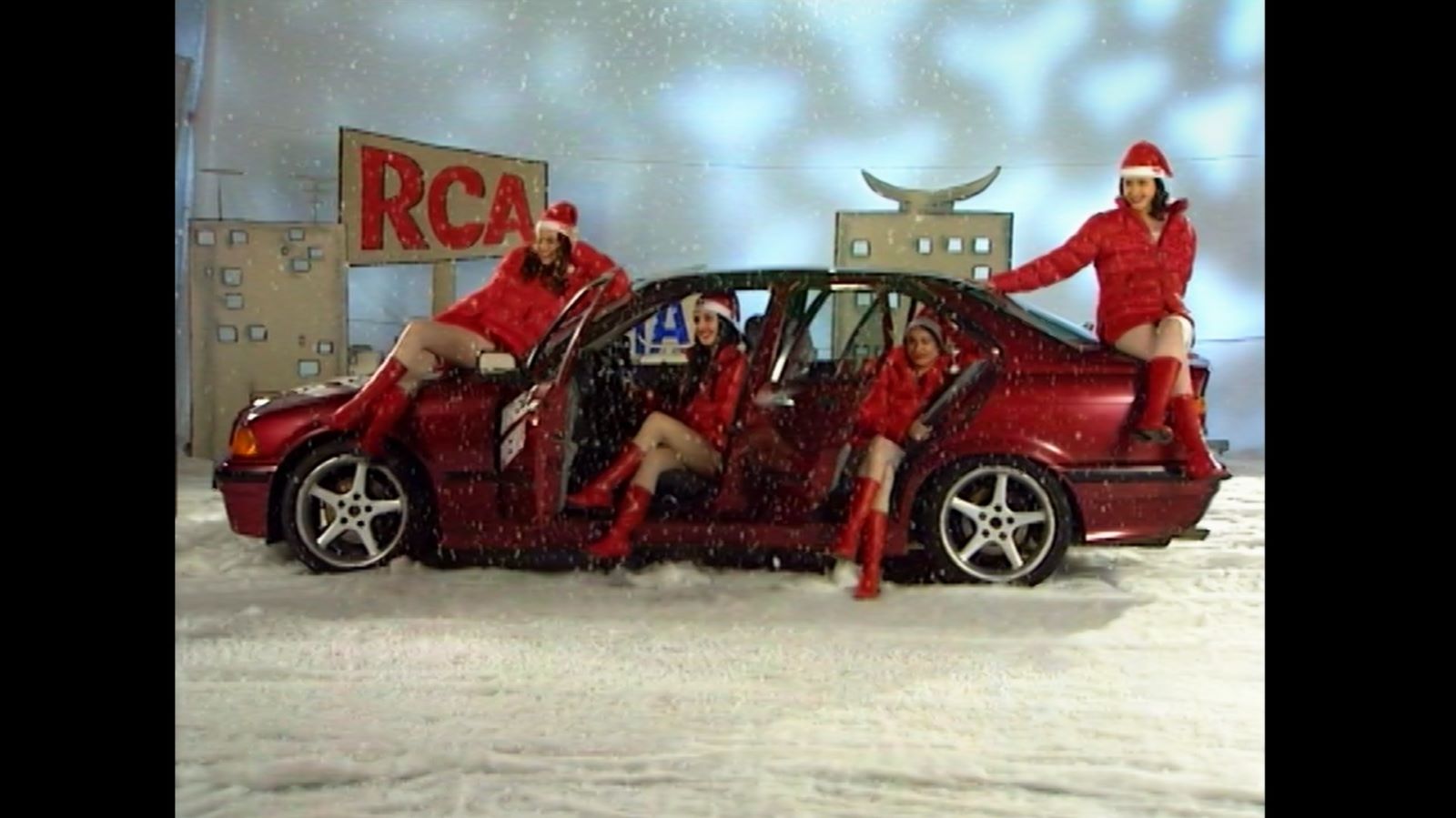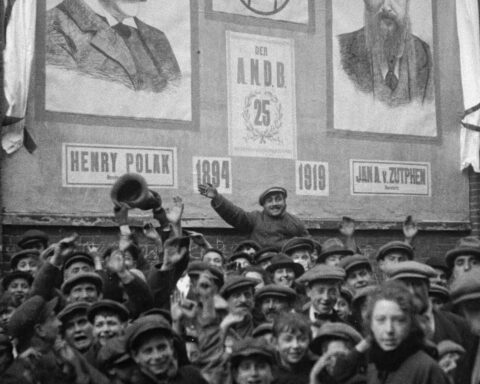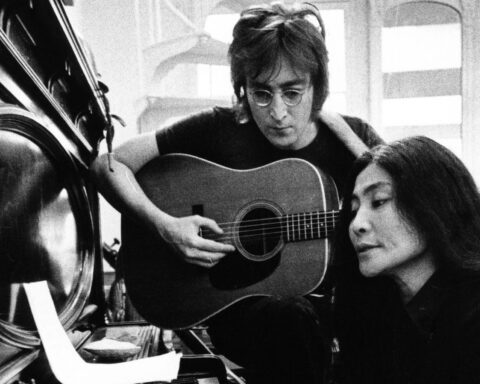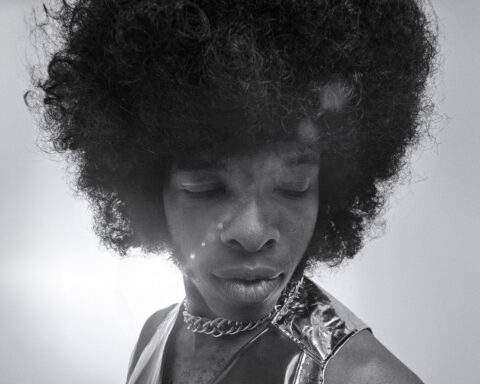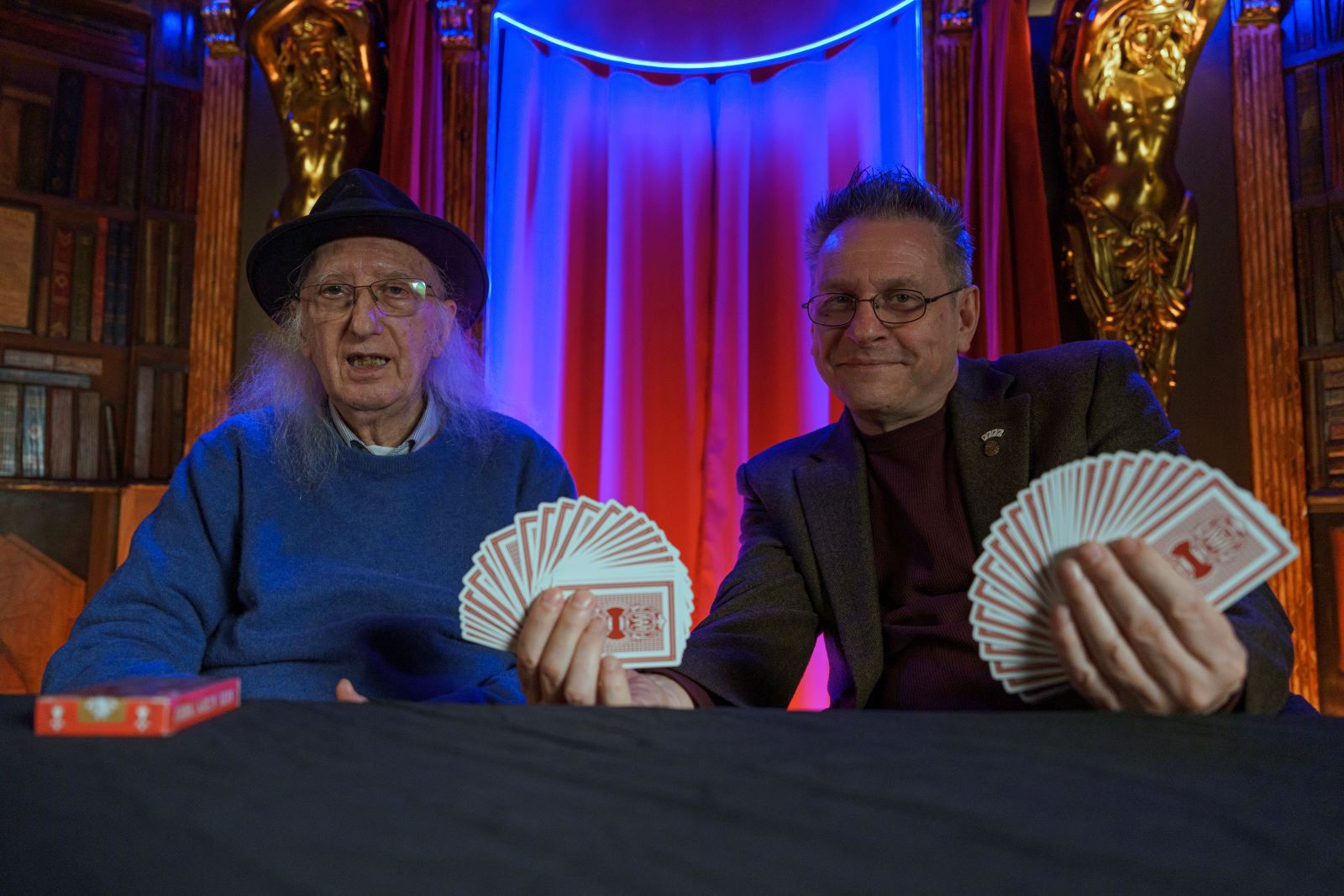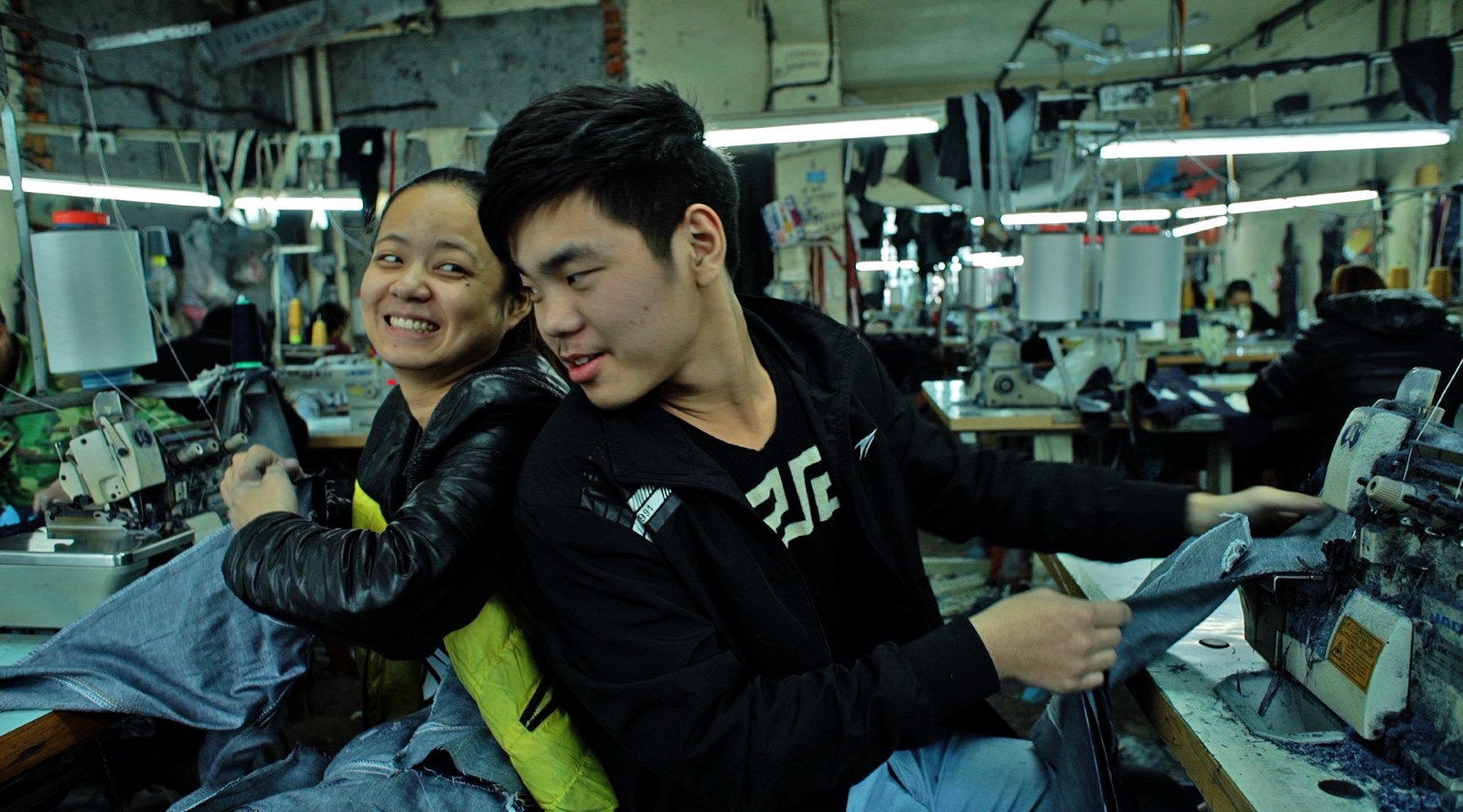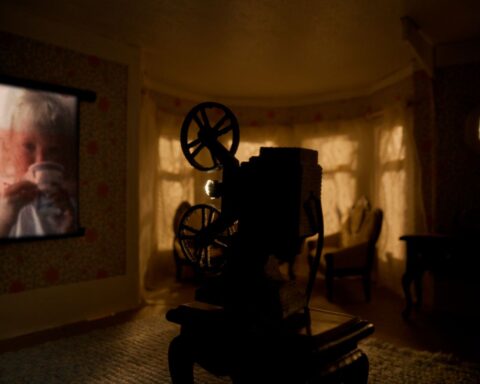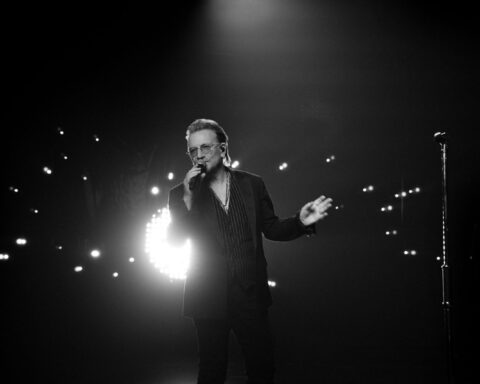After winning the Golden Bear for his COVID-era comedy Bad Luck Banging and Loony Porn (2021) and receiving near-unanimous praise for Do Not Expect Too Much from the End of the World (2023), Romanian provocateur Radu Jude has been applauded for delivering relentless societal critique of contemporary culture through his signature brand of cringe comedy. Both films toured the globe while Jude continued working on his unpredictable filmography.
When Giona A. Nazzaro, the artistic director of the Locarno Film Festival, announced the anticipated lineup for this year’s edition, many cinephiles were dumbfounded by the presence of not just one, but two Jude productions. Eight Postcards from Utopia and Sleep #2, deviating from a fictional framework, skillfully test the boundaries of documentary filmmaking.
Strictly Business
In Eight Postcards from Utopia, Jude collaborated with philosopher Christian Ferencz-Flatz to create a jovial found-footage experiment. The documentary comments on Romania’s post-socialist history by juxtaposing advertisements and outdated commercials from the ’90s to the present. Through an episodic format, Jude and Ferencz-Flatz structure their archive through eight unique chapters and a surprise epilogue.

The film reappropriates the iconography of Romania’s corporate stupor through distinct editing prompts. Not all of the commercials are presented in their entirety. Instead, brief out-of-context clips are compiled to generate new meanings. Whereas Do Not Expect Too Much from the End of the World parodied the production of a commissioned workplace safety video, Jude’s latest film is based upon an absurd, but real, archive of miscellaneous advertisements.
In the opening chapter, “History of the Romanians,” the documentary uses the advertisements to recount the history of modern civilisation. We see mediaeval men and Roman warriors promoting their frivolous products. As the compilation continues, history eventually evolves into the modern day. The commercials themselves range from substandard corporate jargon to absurdist schlock. From PepsiCo to a Bucharest taxi service, Jude and Ferencz-Flatz find demographic similarities within the marketing archive. In pure Jude fashion, the iconoclast includes his own singular brand of self-deprecating humour, as he includes advertisements that compare Romania’s impoverishment with other EU nations such as Germany.
Manufactured Dreams and other Televised Products
The different chapters comment on the problematic traits and commercialised trends of Romanian society. In one segment, the documentary comments on gender divide. The archive demonstrates a history of female sexualisation in the context of marketing trends. The autonomy of the women performers comment on the vacuous misogyny and sexism that runs the corporate world. In another segment, Jude focuses on innovation and technology. As Romanian society grows more accustomed to the social trends of the west, Jude and Ferencz-Flatz poke fun at their society’s interests towards cosmetics and cellular networking.

Eight Postcards from Utopia works most effectively when it reinvents the formula to not just comment on social trends, but to create a new piece of re-appropriated cinema. In the fifth chapter, “The Ages of Man,” the segment uses the commercials to tell a story about human evolution within a capitalist society. The chapter begins with an onslaught of commercials targeting pregnant Romanian mothers. Children start appearing in a handful of the advertisements. The boys slowly grow into men with military recruitment propaganda and alcohol-related promos. Predictably, the segment ends with death.
Whereas the individual segments carry thought-provoking ideas regarding the consumerist life-style in the aftermath of a communist fallout, the chapters fail to mix together into a cohesive piece. The compilation structure doesn’t have a clear throughline across chapters outside of curating an entertaining post-modernist mixtape that demonstrates the vibrant, awkward, and questionable history of Romanian advertisements. The segments could have worked more effectively as individual found-footage shorts and, admittedly, delight individually even if they don’t gel. There are glimmers of greatness within the unexpected documentary, which is comparable to the likeness of other Jude productions such as the alphabet chapter in Bad Luck Banging or Looney Porn.
Grave Encounters
Whereas Eight Postcards from Utopia features a loud and often funny form, Jude’s Sleep #2 takes a completely different approach. Producing mass-walkouts at Locarno within the first 15 minutes of its meagre 60-minute runtime, Jude’s unconventional desktop film pays homage to the work and legacy of Andy Warhol. The film begins with a quote from the legend himself, which reads, “The most wonderful thing about living is to be dead.”

After a moment of darkness, Jude begins his provocation with surveillance footage of Warhol’s grave. Jude retrieved the material from a public broadcast hosted by The Warhol and Earthcam. Compiled from a year’s worth of footage broadcast from January 2022 to January 2023, Sleep #2 remarkably comments on the impact of Warhol’s career.
Surrounded by Campbell’s soup cans and other commemorative decor, Jude’s screen-capture demonstrates the quotidian routines of the groundskeepers and surrounding fauna. A herd of deer abruptly appear in the frame as they frolic within the Pittsburgh cemetery. The low-resolution footage gradually introduces new characters whose appearances are blurred due to the poor-quality captures.
In the process, Jude seizes the essence of Warhol’s audacious work. The tasteful provocation experiments with different forms of time experimentation that is reminiscent of Warhol’s controversial eight-hour long Empire (1965). Patience is a virtue in the construction of Jude’s latest documentary. By zoning on the singular subject, Jude gradually expands the concept by including miscellaneous haikus to complement the stagnant visuals. In the process, an equilibrium between found-footage, poetry, and social critique evolves from the site of the grave.

Unlike his other recent projects where the satire evolves from the situational context, Sleep #2 features scenes that involve Americans tastelessly posing and taking selfies by the gravesite. This time around, the humour derives from reality. In another scene, a group of enthusiasts congregate around his grave. Some of the members of the party are seen wearing Warhol cosplay, adorned with his iconic white wig and monochromatic striped-shirt. The group begin their picnic, situated amongst the dead. In the process, Jude incidentally creates a thought-provoking behavioural study on American sensationalism and blind worship. The juxtaposition between the rowdy group and the creepy location punctuate the impact of Warhol’s legacy.
As the seasons shift, Jude’s minimalist documentary says more with a static broadcast of an immobile tombstone than most conventional talking-head documentaries. Through his patient methodology, the effective cutting slowly unveils a memorable commentary on Warhol’s cultural mythology. In both documentaries, Jude’s minimal directorial strengths illuminates the fascinating and frustrating truths of a sensationalist society. We can’t expect too much from the end of the world, but cinephiles can rely on Jude to deliver.




